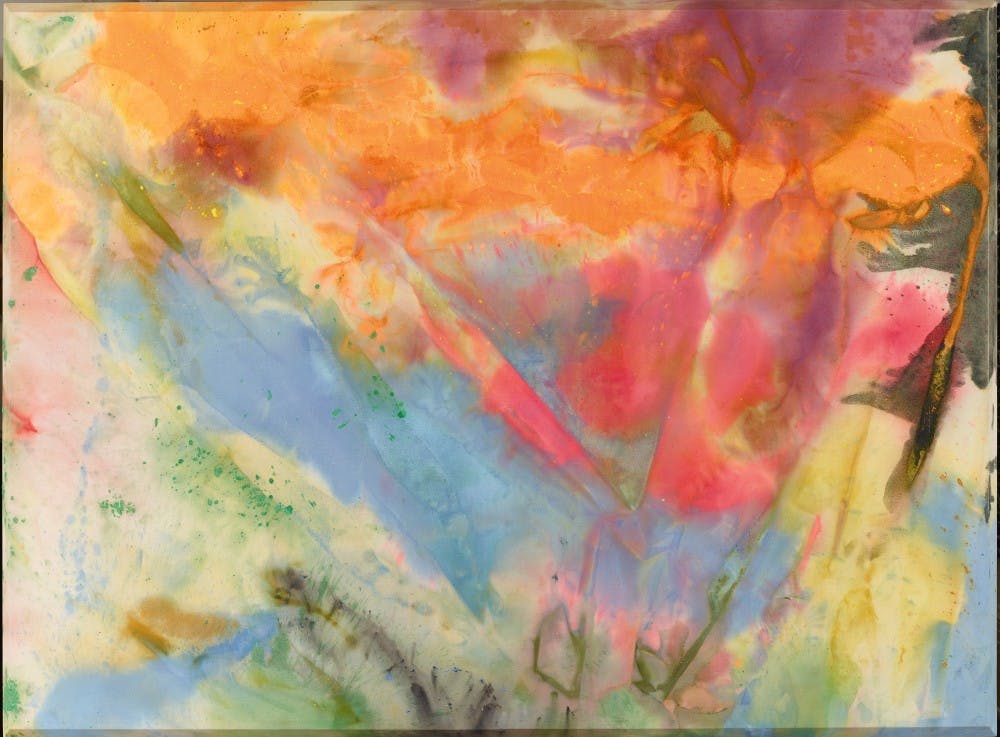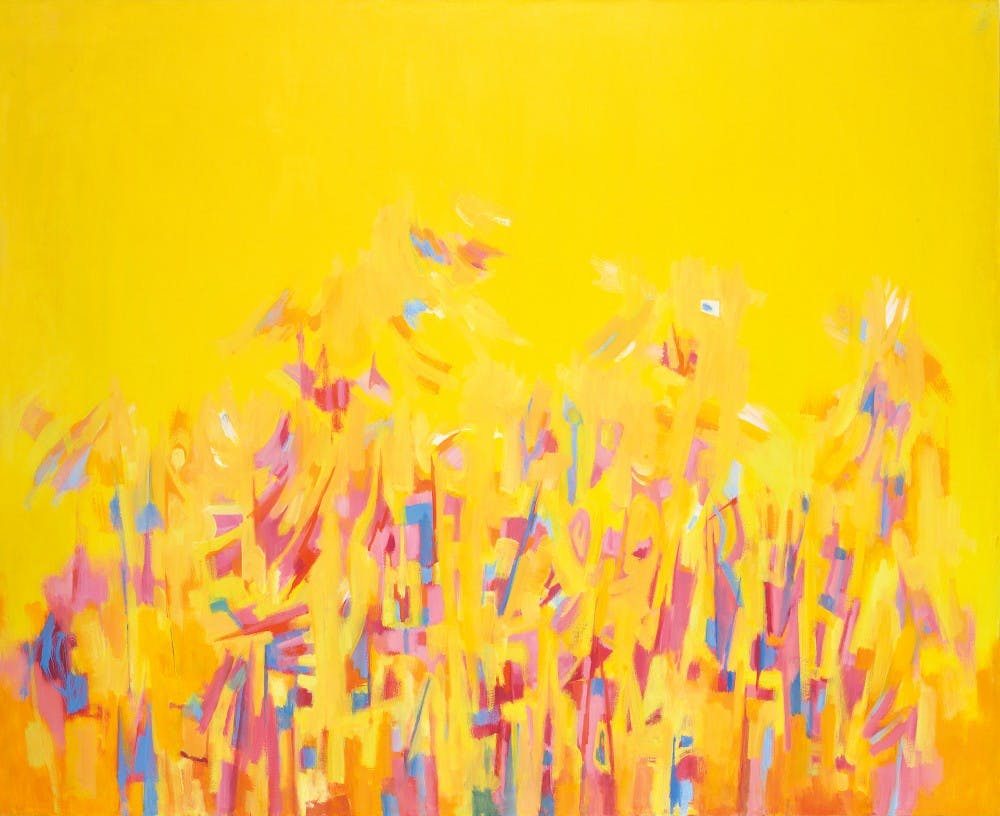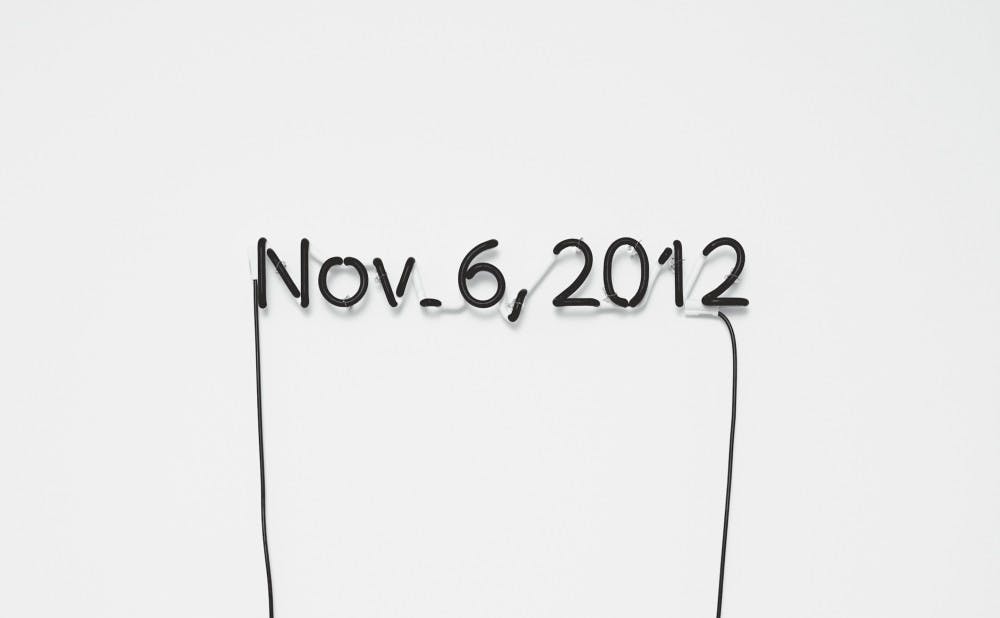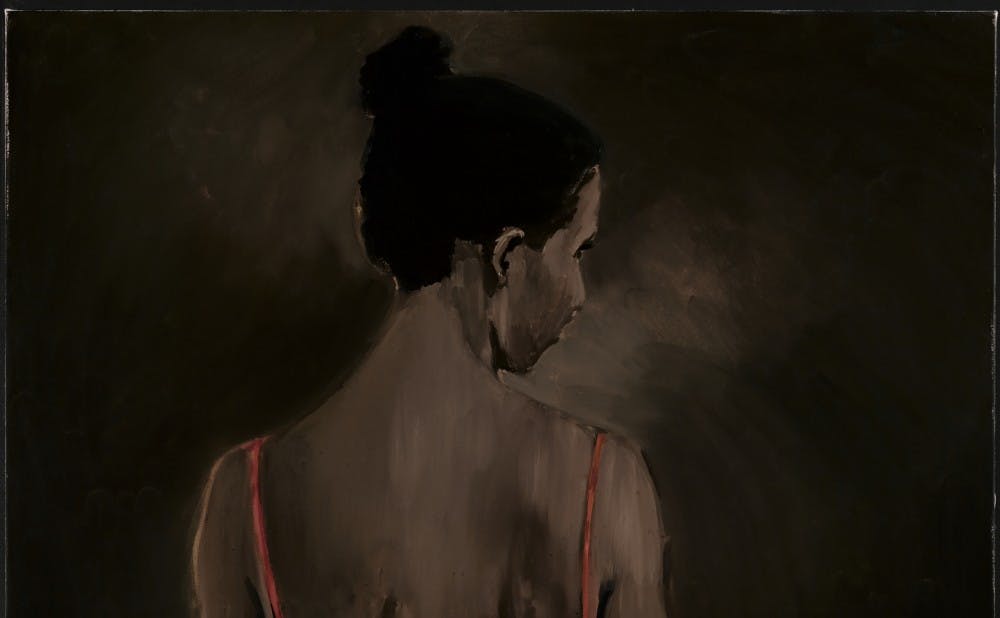Two weeks ago, presidential portraits of the Obamas were unveiled at the National Portrait Gallery. The vibrant and exuberant greens of foliage were juxtaposed with the muted pink stripes of Michelle Obama’s dress. This day marked a moment not only of artistic significance but of historical and cultural import. For the first time, an African-American presidential couple’s paintings created by two African-American artists will hang in the Portrait Gallery in Washington, D.C.
Here in Durham, the “Solidary & Solitary: The Joyner/Giuffrida Collection” exhibition opened at the Nasher last Thursday, featuring works by four generations of artists of African descent. This traveling show first opened at the Ogden Museum of Southern Art in New Orleans and has made its way here to Duke.
Greeting visitors to the gallery is one of the most central pieces in the exhibit. Titled “Afternoon,” it is a dazzling, pulsing field of sunshine yellow. A sea of vertical pastel pink, blue, golden and deep red brush strokes crowd the foreground. The overall composition has an incredible energy and vibrancy.

Norman Lewis made the painting in 1969 at the height of the civil rights movement. At a time when being black meant being keenly aware of his race and place within society, Lewis traversed both the Abstract Expressionist sphere and that of black activists. Reflected in the title of the exhibit, Lewis felt simultaneously alone and in community with his fellow artists. The only African-American artist in the first generation of Abstract Expressionists, Lewis paved the way for younger artists who followed and are also included in the show.
Imagine Creamsicle colors swirled like marble on a giant six-foot canvas. Speckled in the paint are luminescent metallic shades. Sam Gilliam made “After Glow” in 1972 as a color field painting. This stunning display of texture and color is a testament to the magic of art.

Following Lewis and Gilliam, other artists include Melvin Edwards, Kevin Beasley, Charles Gaines and Lynette Yiadom-Boakye. Their works span a diverse range of media and themes. Edwards’ sculptural pieces combines historical objects like chains, shovels and hooks to resemble African ceremonial masks. Beasley reworks fabric and Gaines extracts meaning from numbers and algorithms. Finally, the London-based artist Yiadom-Boakye paints imaginary black figures, presenting them as “natural and normal.”
Pamela Joyner, who, along with her husband, is the collector of the works in the exhibit, hopes to celebrate and highlight the works of black artists who have often been forgotten. In a 2017 interview with SFGate, Joyner said she wants “to try to be a catalyst to reframe art history around artists of African descent.” This exhibit is drawn from her extensive collection of over 300 works.
When it came to installing the show at the Nasher, Marshall Price, the Nancy Hanks Curator of Modern and Contemporary Art at the Nasher, said that the entire process took longer than normal. Some of the pieces were so large that they fit through the doors only by an inch or two. While typical exhibits can fit in one tractor-trailer, this one took four. Planning this show took longer than usual because of the monumental size of many pieces. For a few days, many of the crates lived in the Great Hall of the museum because Price had to wait until they had all arrived to begin installation.
"You think you know as a curator how it’s going to look at the end, but until that last label is put up, that last light is focused, you don't really know until then,” Price said. “It's very gratifying to see it here. I think it looks beautiful.”

Christopher Bedford and Katy Siegel, the originating curators of the show, wanted the exhibit to be organized in solos and duets. This arrangement is preserved at the Nasher. Some parts of the show feature singular artists while others contrast the works of two artists. This duality emphasizes the core idea of the show, which implies that the creation of art is both a solitary and communal experience.
Price is glad that many of the visitors are taking the time to examine the works closely.
“It looked like they were really looking. It is very easy to just glide past a work of art,” he said.
He hopes that viewers find the exhibit engaging and perhaps even find joy in the amalgam of lines, colors, grids and sculptural forms that inhabit the gallery space.
The Nasher MUSE and The Bridge are hosting a student opening party for “Solidary & Solitary: The Joyner/Giuffrida Collection” tomorrow at 8 p.m. with a dessert reception, spoken word performances and live painting.
Get The Chronicle straight to your inbox
Signup for our weekly newsletter. Cancel at any time.

